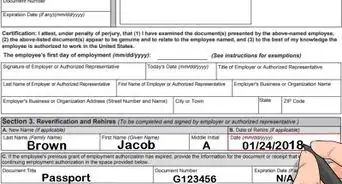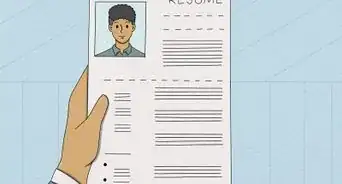This article was co-authored by Clinton M. Sandvick, JD, PhD. Clinton M. Sandvick worked as a civil litigator in California for over 7 years. He received his JD from the University of Wisconsin-Madison in 1998 and his PhD in American History from the University of Oregon in 2013.
There are 13 references cited in this article, which can be found at the bottom of the page.
This article has been viewed 379,271 times.
Wrongful termination is difficult to prove, because most states have an "at will" policy when it comes to employment. Under this policy, either the employee or the employer may terminate employment at any time without consequence. However, there are illegal reasons to terminate an employee. Winning a wrongful termination suit requires that you produce sufficient facts that you were terminated illegally.
Steps
Documenting the Termination
-
1Record your impressions of the termination. Write down all the circumstances of your termination while they are fresh in your mind.
- Create a timeline of events, when you were notified and when you were asked to leave. Document the names of everyone involved.
- Get copies of all paperwork. Be sure to have a copy of your termination notice.[1]
-
2Secure a copy of your personnel file. Ideally, you will have kept a record of all official communications, such as prior reprimands or commendations, as well as informal comments and information about raises.[2]
- Employers sometimes like to hustle people out of the building immediately after being terminated. You may not have time to return to your office and make copies to take home with you.
- Store copies of annual reviews, correspondence, emails, and employee handbooks at home. In this way you will have easy access to this material.
Advertisement -
3Keep pay stubs and financial records. You will need to prove how much the wrongful termination cost you in money. Pay stubs will help establish the amount of wages you lost.[3]
-
4Speak to co-workers to uncover if you are being singled out. If you were fired for making an error, speak to coworkers who also made the same error. If someone else made the same mistake but did not receive the same punishment, this could be proof of discrimination.
- Common reasons for termination are poor job performance and absenteeism. Your termination letter should specify your violation.
- Particularly seek out co-workers who differ from you in terms of age, race, gender, or religion. If they were treated differently, then you may have strong evidence of discriminatory intent.
-
5Send a follow-up email to your supervisor. If you are fired in person, follow up with an email to your supervisor summarizing the contents of the discussion. This might be the sole record of the meeting you have.
- Stay professional and don’t send the email until you can avoid being argumentative. The purpose of the email is simply to document the discussion.
- If you do not feel comfortable sending an email, then simply makes notes about the conversation as soon as possible.
Analyzing Your Case
-
1Determine if you work in an "at will" state. Every state except for Montana is considered at will.[4] This means employers can terminate your employment at any time.
- There are important limitations to “at will” termination. For example, your employer cannot fire you for an illegal reason, such as gender or racial discrimination, or in retaliation for you exercising a legal right.
- You may also not be fired for refusing to perform an illegal act.
- Also, an employer may not make your work environment so uncomfortable that he can anticipate that you will quit. This is called "constructive discharge."
-
2Look for an employment contract. If you signed a contract when you began working, that contract should spell out the terms of your employment and the steps for termination.
-
3Gather employee handbooks and policy manuals. Some states will consider handbooks, policy manuals and other documentation as creating “implied contracts” between employer and employee. Your implied contract might entitle you to a notice period or severance pay before being terminated.
- Language in a handbook must be sufficiently clear that a reasonable employee would believe that a contract is being offered. For example, language such as “shall” or “must” or “never” before a promise is sufficiently clear evidence of a contractual promise.[5]
- But a clear disclaimer stating you have been hired “at will” and that the handbook is not a contract trumps any implied contract.[6]
-
4Review a union contract. A union contract supersedes the “at will” doctrine.[7] The union contract should spell out grounds for dismissal, as well as employer procedure.
-
5Speak to an attorney. Employment law differs from state to state, and the facts of your case are unique. Only a qualified employment attorney can offer tailored legal information.
- To find an attorney, contact your state bar association. They should have a referral system.
- If costs are a concern, most attorneys will represent you under a contingency fee agreement. Under this arrangement, an attorney only gets paid if she wins your case. Typically, she will get around 30-40% of the award amount.
- Under a contingency fee agreement, clients still most pay for costs, such as filing and service fees, so be sure to budget for that.
Filing a Complaint
-
1Find the appropriate forum. If you have a breach of contract claim, then you may file for suit in civil court.
- However, if you allege discrimination, you probably need to exhaust administrative remedies first at either the state or federal level. If you allege discrimination based on race, religion, sex, national origin, age, disability, color, genetic information, or retaliation, then file a complaint with the Equal Employment Opportunity Commission (EEOC).
- You may also file discrimination claims with state agencies. For example, in California, almost all plaintiffs file with the California Department of Fair Employment and Housing because the state agency's rules are more advantageous that the federal ones. In California, you can also request an immediate right to sue and skip the administrative process.
- Constructive discharge suits are brought in both state and federal courts.[8]
-
2Perform a self-assessment. Visit the EEOC’s online self-assessment tool to find out if the EEOC is the right agency for you to file with.
- You have 45 days from the discriminatory action to contact an EEOC counselor.[9] Be prompt.
-
3Fill out a complaint. You initiate a wrongful termination suit by filling out the appropriate form. The correct form depends on whether you are suing for breach of contract or filing a complaint for discrimination/retaliation with the EEOC or a comparable state agency.
- In state court actions for breach of contract, you may secure a blank complaint form from the County Clerk. You will fill in your name as plaintiff and your employer’s name as defendant.
- You initiate the EEOC process by first contacting the office. An EEOC counselor will discuss your rights with you.[10] After your final interview, your counselor will give you a letter with information about how to file the complaint.
- State agency rules may differ from the EEOC. If you choose to file with a state agency, contact them about proper requirements and procedures.
-
4File soon. Whether filing a breach of contract claim in state court or a complaint with an administrative agency like the EEOC, you cannot sit on your rights. You must file before certain deadlines.
- Statute of limitations for breach of contract vary by state. In California, you must file suit within 4 years. In Illinois, you have 10 years.[11]
- You must file a formal complaint with the EEOC within 15 days of receiving notice from your counselor about how to proceed.[12] File the complaint at the EEOC office where you were counseled.
-
5Allege illegal termination. In order to win a wrongful termination lawsuit, you will need to prove that your termination was illegal.
- If suing for breach of contract, you should quote the contract provision your employer violated. For example, if you were promised employment for 3 years, quote the provision that says that. Attach a copy of the employment contract to your complaint.
- In an EEOC formal complaint, you must include your name, address, and telephone number; a short description of the discriminatory events; why you believe you were discriminated/retaliated against (e.g., race); and a description of any injury you have suffered.[13] The complaint must also be signed by you or your lawyer.
Proceeding with a Lawsuit
-
1Perform discovery. In a lawsuit, each side is able to request documents in the possession or control of the other party. If you don't already have copies of your employee handbook or personnel file, then you can request them now.
- Ask for copies of internal checklists or procedures. Companies routinely require that checklists be followed when firing someone. If your employer deviated from established protocol, you may have evidence that discrimination or retaliation was the real motivation.
-
2Sit for your deposition. In addition to exchanging documents, each side is allowed to question witnesses before trial begins in order to establish what each witness knows. As the plaintiff, you most assuredly will be asked to sit for a deposition.
- Prepare thoroughly. Sit down with your attorney and run through questions you will be asked. Be sure to do as many deposition preps as necessary to feel comfortable.
- At the deposition, be sure that you understand the questions thoroughly. Also, never guess; answer “I don’t remember” if you do not remember information.[14]
-
3Oppose the defendant’s motion for summary judgment. Many employment suits are dismissed before trial. A defendant will allege that there are no factual disputes to be resolved at trial and that the defendant is entitled to judgment as a matter of law.[15]
-
4Entertain settlement. If the defendant fails to secure summary judgment, it may want to settle. There are many factors you must consider before accepting or rejecting a settlement:
- How strong your case is. You might lose at trial. With a settlement, you at least will gain some compensation.
- The amount offered. If your case is strong but the settlement amount is low, you might want to proceed to trial or counteroffer for a higher amount. Discuss this with your attorney.
- The emotional burden of trial. At trial, the defendant will paint an unflattering picture of you. Cross-examination on the witness stand may also be stressful. If you want to avoid these stressful situations, a settlement may be ideal.
-
5Go to trial. If settlement talks fail, then only a trial will vindicate your rights. At trial, your attorney will examine witnesses, present evidence, and make a final argument to the judge or jury.
- Prepare to testify. Undoubtedly you will be called to testify at trial. You will be asked about your job performance and about your working relationship with others. Prepare the same way you did for the deposition.
- Assist your lawyer by getting her any documents she needs. Any delays only hurt your case.
Expert Q&A
-
QuestionHow can I determine whether I have a valid case or not?
 Barzin Barry Sabahat, JDBarry Sabahat, Esq. has been practicing law in California since 1993. He received his JD from Western State University College of Law in 1992. His current practice is based in the San Francisco Bay Area and focuses on Estate Planning, Transactional Law and drunk driving cases.
Barzin Barry Sabahat, JDBarry Sabahat, Esq. has been practicing law in California since 1993. He received his JD from Western State University College of Law in 1992. His current practice is based in the San Francisco Bay Area and focuses on Estate Planning, Transactional Law and drunk driving cases.
Attorney at Law To determine if you have a case, you have to talk to an attorney in the state in which you were terminated. Most plaintiff's lawyers provide a free initial consultation, so you should be able to find out if you have a case for no cost. Without seeing an attorney first, determining if you have a case will be somewhat difficult. Assuming you live in an at-will state, you will need to first determine if you are a member of a protected class. These are typically, age, race, national origin, gender and pregnancy, sexual orientation, religion, etc. Then you will need to determine whether an adverse employment action was taken against you. These would include termination, demotion, reduction in pay, transfer, etc. The next thing to determine is whether the adverse employment action was related to your being a member of the protected class. The best way to determine this is to see if other similarly situated employees who are not members of the same class have been treated similarly. For example, if you are an African American man who had a car accident and is being terminated as a result, but a white American who had a similar accident and was not terminated would, then this may show a difference in treatment that would be considered discriminatory action. Finally, you will need to determine what, if any were your damages. Damages can range from loss of income to emotional distress as a result of harassment. And you will need to make sure you do all of this in the time allowed to bring your action. California (as with federal cases) also mandate exhaustion of administrative remedies before a lawsuit can be filed. That means at the least, a "right to sue letter" should be obtained from either EEOC (Federal) or DFEH (California). Make sure that you see a lawyer though, even if you don't think you have a case.
To determine if you have a case, you have to talk to an attorney in the state in which you were terminated. Most plaintiff's lawyers provide a free initial consultation, so you should be able to find out if you have a case for no cost. Without seeing an attorney first, determining if you have a case will be somewhat difficult. Assuming you live in an at-will state, you will need to first determine if you are a member of a protected class. These are typically, age, race, national origin, gender and pregnancy, sexual orientation, religion, etc. Then you will need to determine whether an adverse employment action was taken against you. These would include termination, demotion, reduction in pay, transfer, etc. The next thing to determine is whether the adverse employment action was related to your being a member of the protected class. The best way to determine this is to see if other similarly situated employees who are not members of the same class have been treated similarly. For example, if you are an African American man who had a car accident and is being terminated as a result, but a white American who had a similar accident and was not terminated would, then this may show a difference in treatment that would be considered discriminatory action. Finally, you will need to determine what, if any were your damages. Damages can range from loss of income to emotional distress as a result of harassment. And you will need to make sure you do all of this in the time allowed to bring your action. California (as with federal cases) also mandate exhaustion of administrative remedies before a lawsuit can be filed. That means at the least, a "right to sue letter" should be obtained from either EEOC (Federal) or DFEH (California). Make sure that you see a lawyer though, even if you don't think you have a case. -
QuestionCan someone call and get you fired?
 Barzin Barry Sabahat, JDBarry Sabahat, Esq. has been practicing law in California since 1993. He received his JD from Western State University College of Law in 1992. His current practice is based in the San Francisco Bay Area and focuses on Estate Planning, Transactional Law and drunk driving cases.
Barzin Barry Sabahat, JDBarry Sabahat, Esq. has been practicing law in California since 1993. He received his JD from Western State University College of Law in 1992. His current practice is based in the San Francisco Bay Area and focuses on Estate Planning, Transactional Law and drunk driving cases.
Attorney at Law Yes. If you work in an "at-will" state, then the employer does not need any reason to terminate your employment so long as they don't do it for a bad reason. (Discrimination, whistle-blower, etc.) As a result, if your employer receives a complaint phone call from someone, the employer is well within his or her rights to terminate your employment. Keep in mind, office politics may be bad for business, but they are not against the law and neither is being abrasive and unpleasant. So your boss can be a "jerk" and still be well within his rights to terminate you for no reason at all.
Yes. If you work in an "at-will" state, then the employer does not need any reason to terminate your employment so long as they don't do it for a bad reason. (Discrimination, whistle-blower, etc.) As a result, if your employer receives a complaint phone call from someone, the employer is well within his or her rights to terminate your employment. Keep in mind, office politics may be bad for business, but they are not against the law and neither is being abrasive and unpleasant. So your boss can be a "jerk" and still be well within his rights to terminate you for no reason at all. -
QuestionWhat compensation might be given to someone who was illegally fired if the court favors him?
 Barzin Barry Sabahat, JDBarry Sabahat, Esq. has been practicing law in California since 1993. He received his JD from Western State University College of Law in 1992. His current practice is based in the San Francisco Bay Area and focuses on Estate Planning, Transactional Law and drunk driving cases.
Barzin Barry Sabahat, JDBarry Sabahat, Esq. has been practicing law in California since 1993. He received his JD from Western State University College of Law in 1992. His current practice is based in the San Francisco Bay Area and focuses on Estate Planning, Transactional Law and drunk driving cases.
Attorney at Law Compensation depends on where you file your action and what the employer did to you. For example, in California's State Courts, a wrongfully terminated employee may be able to recover not only lost income and reinstatement, but also emotional distress, punitive damages for particularly egregious conduct, and attorney fees. Actions filed in the Federal Court under Title VII of the United States Codes provide for reinstatement, lost of pay, and attorney fees.
Compensation depends on where you file your action and what the employer did to you. For example, in California's State Courts, a wrongfully terminated employee may be able to recover not only lost income and reinstatement, but also emotional distress, punitive damages for particularly egregious conduct, and attorney fees. Actions filed in the Federal Court under Title VII of the United States Codes provide for reinstatement, lost of pay, and attorney fees.
Warnings
- Be prepared to defend yourself if your employer claims you were terminated for a specific reason, such as violating a policy or doing poor work. Keep records of performance reviews and other documentation that shows you were a good worker.⧼thumbs_response⧽
References
- ↑ http://www.nolo.com/legal-encyclopedia/wrongful-termination-gathering-documentation-32283.html
- ↑ http://www.nolo.com/legal-encyclopedia/wrongful-termination-gathering-documentation-32283.html
- ↑ http://www.legalmatch.com/law-library/article/how-to-file-a-wrongful-termination-suit.html
- ↑ http://www.ncsl.org/research/labor-and-employment/at-will-employment-overview.aspx
- ↑ http://www.illinoislegalaid.org/index.cfm?fuseaction=home.dsp_content&contentID=316
- ↑ http://labor-employment-law.lawyers.com/human-resources-law/at-will-employment.html
- ↑ http://www.illinoislegalaid.org/index.cfm?fuseaction=home.dsp_content&contentID=316
- ↑ http://apps.americanbar.org/litigation/committees/employment/articles/spring2014-0614-when-can-employee-quit-still-sue-wrongful-discharge.html
- ↑ http://www.eeoc.gov/federal/fed_employees/counselor.cfm
- ↑ http://www.eeoc.gov/federal/fed_employees/counselor.cfm
- ↑ http://www.nolo.com/legal-encyclopedia/statute-of-limitations-state-laws-chart-29941.html
- ↑ http://www.eeoc.gov/federal/fed_employees/filing_complaint.cfm
- ↑ http://www.eeoc.gov/federal/fed_employees/filing_complaint.cfm
- ↑ http://www.expertlaw.com/library/expert_witness/deposition_prep.html
- ↑ https://www.law.cornell.edu/rules/frcp/rule_56
About This Article
To win a wrongful termination lawsuit, start by collecting evidence for your case, like work emails, the contract you signed when you began working, the company handbook, and your pay stubs. Then, speak to an attorney who can help you file your claim and present your case. If you allege discrimination, your attorney may tell you to file with the Equal Opportunity Employment Commission. For more advice from our Legal co-author, like how to proceed with your lawsuit, scroll down!

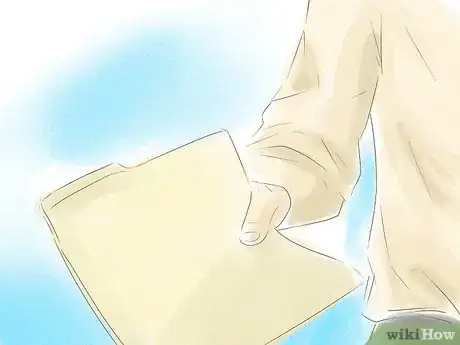


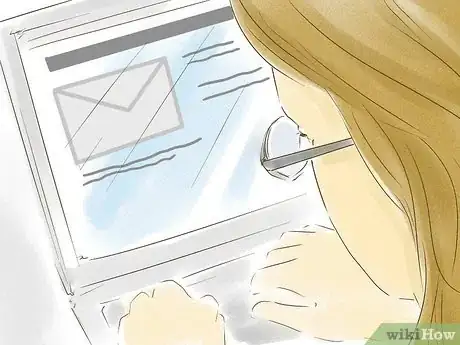








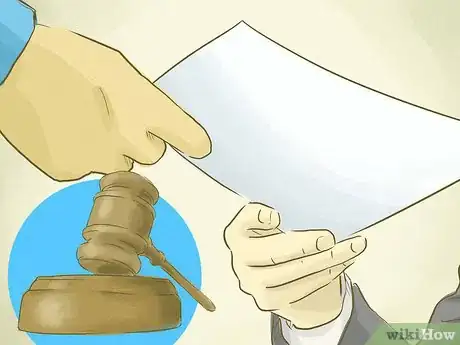














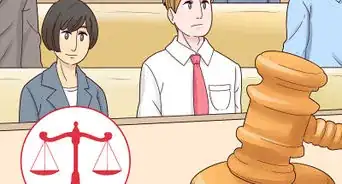

-Status-Step-6.webp)

